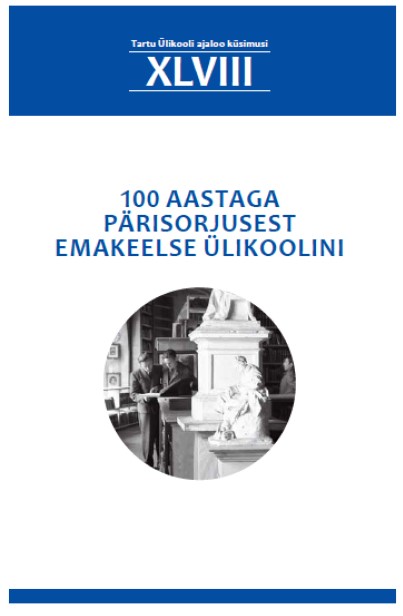"Ideaalide Eesti. Sada aastat otsinguid". Eesti rahvusülikooli 100. aastapäevale pühendatud näituse kontseptsioon
"Estonia of Ideals. 100 Years of Quests". Exhibition dedicated to the 100th anniversary of the Estonian National University
DOI:
https://doi.org/10.15157/tyak.v48i48.16892Abstract
This exhibition explores Estonia’s important choices, ideas and upheavals.
The aim of the exhibition is to highlight, through the role of
the National University, the history of the development of national
thought, its ideals in the context of events that had controversial and
ground-breaking significance in Estonia, including failures and disappointments.
All the issues highlighted have a decisive or tangible
impact even today. The main idea of the exhibition was based on the
premise that the current situation and course of the Estonian national
university has always had a major influence on the welfare of the
Estonian state and society. In the most general terms, the national
university helped create the theoretical, independent, intellectual
and power attributes of the Republic of Estonia and has at various
times aided in interpreting the idea, nature, and future scenarios of
the Estonian nation state.
From each decade of the century, an important but polarising topic
was chosen for the exhibition, accompanied by the question: “What
if...”. The ideological upheavals of different decades were viewed from
the opposite points of view, alternatives were analysed and opportunities
were created to place visitors on different sides of the argument.
The aim was to look at events in a rich context of connections
on various levels of society, including through confrontations and controversies.
The critical stance of the exhibition and the questions that were
voiced during the centenary of the Estonian National University owing
to it (some of which are discussed even today) are more topical
now than they were some time ago. The critical approach emanated
from the desire to initiate discussions between people and encourage
introspection, to provide food for thought and look at the processes
that have determined the developments of the past hundred years in light of today’s understandings and expectations. For example, the
exhibition looked at the issue of female students in the context of the
1920s. Free thought was at the heart of the 1930s, and the concept of
mass university was chosen to represent the 2000s.
As stated in the introduction to the exhibition, the impact of the
University of Tartu on Estonian society, politics and culture cannot be
overestimated. However, the development of the University of Tartu
did not run from victory to victory starting from its establishment in
1632, but is a story marked by interruptions and ideological changes.
In 1919, the University of Tartu was opened as an institution providing
instruction in the native language of the newly established
Republic of Estonia and this had a lasting significance. The research
exhibition “Estonia of Ideals” meant to create a critical challenge for
the modern visitor and the University of Tartu itself, as it allows to
consider the university’s role in our past, present and future.

